IDP News Issue No. 21
The IDP Database Goes International
We are delighted to announce that the three Dunhuang manuscripts in the collection of the Chester Beatty Library (CBL), Dublin, Ireland, are now online on the IDP Interactive Web Database (search under specific search for 'CBL*') following a collaboration between the CBL and IDP. IDP would like to thank the CBL for their cooperation and preparing and loaning photographs of the manuscripts to make this possible.
Sponsors are sought to help fund other such collaborations (see project news)
Sven Hedin: Explorer and Collector
Håkan Wahlquist Sven Hedin (1865-1952) spent almost twenty years of his life on Asian soil. Originally, he aspired to follow the path of other late nineteenth century Swedish explorers and engage in polar research. But an offer to serve as private teacher to the son of a man who worked in the naphtha fields of the Nobel family in Baku directed his attention to Asia. After completing his work he embarked on a ride through Persia, which taught him how to endure both physical and economic hardship en route.
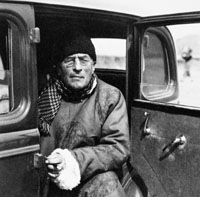
Left:Sven Hedin in his car during his last expedition, Inner Mongolia 1934 © The Sven Hedin Foundation
Hedin's Persian exploits drew him further into Asia, acquainting him with its people and history. The book he wrote upon his return (Hedin 1887) set the tone for a string of travelogues, which were to make him into one of the best read explorers of his day. His prolific writing and extended lecture tours provided him with the financial means to maintain his family and also to finance future expeditions. He held no public or academic position.
Back in Sweden in the mid-1880s and lacking any formal training for future expeditions, Hedin studied geography, geology and palaeontology. His father was the Stockholm city architect and life in and around the family was rich and intensive. The family soon became centred on him. Only one sister married, the other siblings remained together for the rest of their lives and developed into a kind of secretariat for Hedin, serving him both in the field or at home. The private archives left behind by Sven Hedin testify to the exceptional position he was to occupy in Swedish public and learned life. He became a member of several academies, and few if any comparable persons have received so many international decorations and honours. Admittedly some of these were revoked when Sven Hedin entered the political arena advocating a pro-German stand, a political position that proved mistaken in both World Wars. Right up to his death Hedin remained loyal to these political and social ideas: vestiges of his nineteenth-century upbringing.
n the early 1890s Hedin was studying with Ferdinand von Richthofen in Berlin, the foremost China expert of his day. His teacher implored him to further his research before leaving for Asia, but Hedin settled for a minor study for his dissertation, so as to free him as soon as possible for a first expedition. Already in 1890-91 he made a reconnaissance expedition to Kashgar (Hedin 1892-3) and he felt ready to tackle the last blank areas on the Central Asian map. He knew that time was running out for classical explorers.
Hedin's Central Asian Expeditions
Hedin's first expedition lasted four years — 1893-97. He mapped the Pamirs before turning to the desert of the Tarim Basin. He had read about recent archaeological discoveries in the area and was soon fed the same local stories as had been heard by travellers before him: of 'cities buried in the sands'. Hedin sought them out, less for archaeological reasons than because their discovery would help his studies of the changing landscape of the basin. In early 1895, this took him to Tumschuk/Maralbashi, but it was for Paul Pelliot in 1906 to reveal the importance of this discovery. In late 1895 and early 1896, Hedin travelled from Kashgar to Khotan. While in Kashgar he had been shown the Russian Consular General Petrovskij's archaeological collection, and probably discussed antiquities with the British representative there, Mr. Macartney. On the way to Khotan he noted several sites, ruminating on the earthenware shards and glass fragments. Once in Khotan, he visited Yotkan and acquired an archaeological collection of well over 500 objects — including some manuscripts (Hedin 1898: 78-100; Montell 1936 & 1938) —from various sources. After hardly a week, he left again for the desert. Between Khotan darya and Keriya darya he discovered the ruined settlement that Aurel Stein was to identify in 1900 as Dandan Uiliq. Hedin acquired several objects from this site. Following the Keriya darya northwards he learned about more ruins and soon after pinpointed Kara Dung on his maps, but made no collections from this site. The rest of Hedin's first expedition was devoted to his primary objectives — to map and explore unknown areas of Northern Tibet.

Left:Landscape and figures along the Tarim River on Hedin's Second Expedition, 1900. © The Sven Hedin Foundation
Hedin's second expedition (1899-1902) was again devoted to the Tarim basin. He mapped the Tarim River in minute detail and expended great efforts into unravelling its lower courses and the position of the enigmatic Lop Nor. These stages of the expedition took him in January 1900 to Endere (Hedin 1903 Vol. I: 338 ff. 1904: 376 ff.). Following Cherchen darya he encountered amazingly well preserved mummies of apparently Indo-European origin. Of greater importance, however, was the discovery his servant ördek, made on 28 March 1900, when he stumbled upon ruins of an old settlement in the then dried up terminal areas of Kontje darya (Hedin 1903 Vol. I: 427 ff.; 1905: 620 ff.).
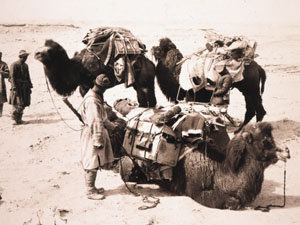
Right:The Hedin expedition in 1901 near Lop Nor. © The Sven Hedin Foundation
One year later Hedin returned spending a week exploring what was to be identified as Loulan (Hedin 1903 Vol. II:102 ff., 1905: 620 ff). He acquired a sample of objects (Bergman 1935), and an important collection of wooden and paper documents in Chinese (Conrady 1920). The rest of the second expedition was devoted to an aborted attempt to reach Lhasa and a final crossing and mapping of the Tibetan high plateau.
Hedin's third expedition (1905-1908) was devoted to work in Persia and Tibet, devoid of any archaeological content. Hedin then spent almost twenty years writing a series of books, venturing further into politics, acting as a quasi-reporter at the battlefronts of the Great War, travelling the Middle East, recording the results of his great Persian and Tibetan expedition (Hedin 1918-27, 1916-22) and eventually preparing for his final expedition.
His fourth and final expedition lasted eight years (1927-35). It was actually a succession of expeditions, with different sponsors, participants and programmes. It covered Inner Mongolia, Xinjiang and Northern Tibet. This time Hedin headed various constellations of young scholars from a number of countries. The aims of the expedition were first and foremost within the fields of geo- and related sciences, but Hedin also took ethnographers and archaeologists with him. The archaeological projects were designed together with John Gunnar Andersson, the Swedish geologist turned archaeologist, who had had such profound impact on developing Chinese archaeology.
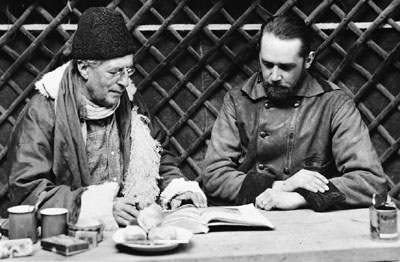
Left:Hedin with Folke Bergman on Hedin's final expedition, 1934 © The Sven Hedin Foundation
The young Swede Folke Bergman served as Hedin's main archaeologist (Bergman 1945), together with Huang Wenbi, and this turned Bergman into an accomplished field archaeologist. He devoted much time to Neolithic traces in Inner Mongolia (Maringer 1950), but his major contributions were made in the Etsina region, which he carefully surveyed and mapped (Sommarström 1956 & 1958; Sylwan 1949), and the archaeologically intriguing area of the lower Kontje darya (Bergman 1939; Sylwan 1941, 1949). Bergman made substantial archaeological collections, which were taken to Sweden for analysis. In accordance with the agreement that Sven Hedin had negotiated with the Chinese authorities, the collections were repatriated in the early 1950s, and are now to be found in the History Museum, Beijing. Only minor parts were allowed to remain in Sweden. The fabulous find of Han-dynasty wooden slips from Etsina remained in China for analysis, but they are now in Taiwan. The Stockholm holdings of Central Asian manuscripts were augmented by acquisitions of materials in Saka, Tibetan, Old Turkic and Xixia made by other members of the expedition. Folke Bergman died prematurely in 1946 putting an end to direct Swedish contacts with Chinese archaeology. Fortunately he had finished cataloguing and analysing his material, enabling other scholars to publish most of his material.
Professor Hakån Wahlquist is Senior Curator for Asia in the National Museum of Ethnography, Stockholm, and Keeper of the Sven Hedin Foundaiton.
Bibliography
Bergman, Folke, 'Lou-Lan Wood-Carvings and Small Finds Discovered by Sven Hedin', Bulletin of the Museum of Far Eastern Antiquities 7 (1935), pp. 71-144.
—, Archaeological Researches in Sinkiang (Reports: 7), Stockholm 1939.
—, Travels and Archaeological Field-work in Mongolia and Sinkiang: a Diary of the Years 1927-1934 History of the Expedition in Asia 1927-1935 Part IV: General Reports of Travels and Fieldwork: 1-192, (Reports: 26), Stockholm 1945.
Conrady, August, Die Chinesischen Handschriften — und sonstigen Kleinfunde Sven Hedins in Lou-lan, Stockholm 1920.
Hedin, Sven A., Genom Persien, Mesopotamien och Kaukasien. Reseminnen, Stockholm 1887.
—,General Prschevalskij's forkningsresor i Centralasien, Stockholm 1889-91
—, Genom Khorasan och Turkestan: Minnen fran en resa i Centralasien 1890 och 1891, 2 vols., Stockholm 1892-3.
—, En Fard Genom Asien 1893-97, 2 vols., Stockholm 1898 (English edition: Through Asia, London 1898 (1898a)).
—, Asien: Tusen mil pa okända vägar, 2 vols, Stockholm 1903 (English edition: Central Asia and Tibet, London, New York and Melbourne 1903 (1903)).
—, Scientific Results of a Journey in Central Asia 1899-1902, 6 vols. text + 2 vols. maps, Stockholm 1904-7.
—, The Tarim River (Scientific Results of a Journey in Central Asia 1899-1902, Vol. I), Stockholm 1904.
—, Lop-Nur (Scientific Results of a Journey in Central Asia 1899-1902, Vol. II), Stockholm 1905.
—, Southern Tibet: Discoveries in Former Times Compared to my Own Researches in 1906-08, 9 vols. + 3 vols. maps and panoramas, Stockholm & Leipzig 1916-22.
—, Eine Routenaufnahme durch Ost-Persien, 2 vols. + 1 vol. maps, Stockholm 1918-27
— (with Folke Bergman), History of an Expedition in Asia 1927-1935: Part I: 1927-1928 (Reports: 23), Stockholm 1943 (1943a)
—, History of an Expedition in Asia 1927-1935. Part II: 1928-1933 (Reports: 24), Stockholm 1943 (1943b).
— (with Folke Bergman), History of an Expedition in Asia 1927-1935. Part III: 1933-1935 (Reports: 25), Stockholm 1944.
—, History of an Expedition in Asia 1927-1935. Part IV: General Reports of Travels and Fieldwork (Reports: 26), Stockholm 1945.
Huang Wenbi, Gaochang zhuanji, Peking 1931 (1931a).
—, Gaochang zhuanji zhuiyan, Peking 1931 (1931b)
—, The Exploration around Lob Nor: A report on the exploratory work during 1930 and 1934, [Chinese and English trans. of preface and contents)], Peking 1948.
—, Gaochang tuanji, Peking 1951.
—, Talimu Pendi Kaogu ji, Peking 1958.
—, Huang Wenbi Meng Xin Kaochariji 1927-1930, Peking 1990.
Montell, Gösta, 'Sven Hedin's Archaeological Collections from Khotan: Terra-cottas from Yotkan and Dandan-Uiliq', The Bulletin of the Museum of Far Eastern Antiquities 7 (1936), pp. 145-221.
—, 'Sven Hedin's Archaeological Collections from Khotan II' (appendix by Helmer Smith (pp. 101-102)), The Bulletin of the Museum of Far Eastern Antiquities 10 (1938), pp. 83-113.
Reports: Reports from the Scientific Expedition to the North-western Provinces of China under the leadership of Dr. Sven Hedin, 55 vols., Stockholm.
Sommarström, Bo, Archaeological Researches in the Edsen-gol Region Inner Mongolia, Part I (Reports: 39), Stockholm 1956.
—, Archaeological Researches in the Edsen-gol Region Inner Mongolia, Part II (Reports: 41), Stockholm 1958.
Sylwan, Vivi, Woollen Textiles of the Lou-lan People (Reports: 15), Stockholm 1941.
—, Investigation of Silk from Edsen-gol and Lop-nor (Reports: 32), Stockholm 1949.
A full bibliography of Sven Hedin's work is being added to the Sven Hedin Foundation web site. The web site http://www.silk-road.com/bibliography/hedinb3.html offers a partial and annotated bibliography.
The Centenary of the First German Expedition to Turfan Exhibition and Symposium in Berlin
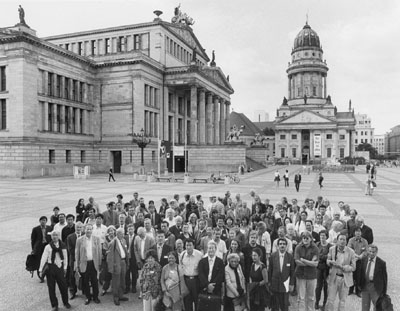
To commemorate the first German expedition to Turfan in 1902 (see IDP News 3), the Museum for Indian Art (Museum für Indische Künst) in Berlin-Dahlem opened an exhibition entitled 'Century of the Turfan Expeditions: Art and Culture of the Silk Road — a Documentation'.
The Museum re-opened last year after extensive renovations and many of the items from the exhibitions are on permanent display in the handsome new galleries, including murals, sculptures in clay, wood and metal, and painted, woven and embroidered textiles, alongside a small selection of the 40,000 manuscript fragments in over 20 languages and scripts. The special exhibition, which opened on September 9, gives access to items which are not normally on display.
A symposium, entitled 'Turfan Revisited: The First Century of Research into the Arts and Cultures of the Silk Road', was organised to coincide with the exhibition opening. Over 100 leading international scholars (see above) convened at the Museum from 8-13 September to share the results of their researches on the manuscripts and paintings from Turfan. The symposium was convened by the Berlin Brandenburg Academy of Sciences and Humanities (BBAW), the Museum of Indian Art and the Oriental Department of the State Library. A special booklet entitled Turfanforschung, published to commemorate this event, is available free of charge from BBAW on request and is also mounted on their website.
The Sven Hedin Foundation
Sven Hedin, upon his death in 1952, left his entire scientific and personal estate to the Royal Swedish Academy of Sciences in the form of a foundation, namely 'The Sven Hedin Foundation'. This owns the copyright to all his books and texts, photographs, films, drawings, maps etc. The Foundation's aim is to take care of and augment the collections, and to organise and keep them available for research. It is also to continue publishing the results of Hedin's expeditions, primarily the final one.
Hedin's collections are housed in various museums most of which are in Stockholm. The National Museum of Ethnography houses the ethnographic and archaeological material (including the manuscripts) and they all belong to the museum. Hedin's library, maps, photographs, films, drawings, and personal belongings are all deposited there. The Museum of Natural History owns the botanical, zoological, geological and other related collections. The enormous personal archives are deposited with the National Archives, though some parts of them are still kept with the National Museum of Ethnography.
A website for the Hedin Foundation is slowly being developed. One of the intentions is that it will provide a comprehensive but always augmentable and correctable research guide to the worldwide collections related to Sven Hedin and his long career as explorer, scientist and public figure.
Contact details:
The Sven Hedin Foundation
National Museum of Ethnography
Box 27140
SE-102 52 Stockholm, Sweden
email: hwq@etnografiska.se
Publications and Periodicals
Histoire des Marchands Sogdien
E. de la Vaissière, E.
(Bibliothèque de l'Institut des Hautes Etudes Chinoises, 32),
Collège de France, Paris 2002
413 p. + 8 pl. + 6 maps + 2 folded maps (Zerafshan valley and
Sogdian trade in China)
4 indexes : proper names, geographical names, subjects, sources, and a 42 page
bibliography
ISBN 2-85757-060-0
ISSN 0768-3952
35 Euros
English summary
The Story of Sogdian Traders
Part I: The First Network (to AD 350)
Chap 1 : The beginnings of the Sogdian network : a tentative chronology
Chap. 2 : The Ancient Letters
Chap. 3 : The trade with India
Part II: the Commercial Empire
Chap 4 : Sogdiana, a main market
Chap. 5 : In China
Chap. 6 : Structures
Part II: Trade and Diplomacy (550-750)
Chap. 7 : The Turco-sogdian milieux
Chap. 8 : Traders and diplomats in the West
Part IV: End of the Network (700-1000)
Chap. 9 : In the Dar al-Islam
Chap. 10 : Links severed
To order:
http://www.deboccard.com/anglais/Rub/Nouv.htm (scroll down to "Institut des hautes études chinoises")
Librairie de Boccard
11 rue de Medicis
75006 Paris
FRANCE
tel: +33 1 43 26 00 37
fax: +33 1 43 54 85 83
Lexique étymologique du tokharien
L. Isebaert
Brepols, Turnhout 2002
350 pp. + ills., 160 x 240 mm
ISBN 2-503-50791-3, approx. Euros 65.
To order:
http://www.brepols.net
Brepols Publishers
Begijnhof 67
B-2300 Turnhout,
Belgium
tel: +32 14 44 80 20
fax: +32 14 42 89 19
email:info.publishers@brepols.com
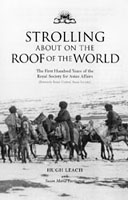
Strolling About on the Roof of the World
The First Hundred Years of the Royal Society for Asian Affairs
(Formerley Royal Central Asian Society)
Hugh Leach with Susan M. Farrington
RoutledgeCurzon, 2002, HB, 212 pp., 190 ills. index, ISBN 0-415-29857-1, £25.00 plus p&p.
This volume traces the history of the Society, including vignettes on some of the more remarkable and eccentric members, and with chapters on the Society's activities, collections and awards. It includes many of the previously unpublished photographs held by the Society.
To order: RSAA
2 Belgrave Square
LONDON SW1X 8PJ, UK
tel: +44 20 7235 5122
fax: +44 20 7259 6771
email:
info@rsaa.org.uk
Central Asian Art: New Revelations from Xinjiang
Dr P. Banerjee
Abha Prahashan, UP, 218 pp, inc. 122 B&W ill. USD250
To order:
Abha Prakashan, D-266, Sector-55
Noida 201301 (UP), India
tel: +91 11 1204 582 112
email:abha.banerjee22@yahoo.com
Mongolie du Nord-Ouest, Tsagaan Salaa/Bala Oigor
(Memoires De La Mission Archeologique Francaise En Asie Centrale, 6).
E. Jacobson, V. Kubarev, D. Tseevendorj
2 vol. (21.5 x 30), 482 pp.,1323 pictogrammes, 256 pp. Pl., 12 cartes,
3 ills., 427 photographs, 95 Euros.
Tsagaan Salaa/Bago Oigor, in the Altai Mountains of Bayan, is the largest petroglyph site in Mongolia. the test of this publication is also in English and Russian.
To order:http://www.deboccard.com
Buddhist Manuscripts in the Schøyen Collection
Volume 2
Jens Braarvig, Paul Harrison
Jens-Uwe Hartmann, Kazunobu Matsuda and Lore Sander (edd.)
400 pp., 56 plates
NOK 980, (approx. US$125)
To order:
email: hermesac@online.no
email: (in Japan): malshow@beige.ocn.ne.jp
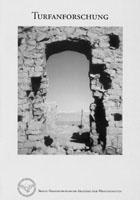
Turfanforschung
Berlin-Brandenburgischen Akademie der Wissenschaften (BBAW)
Berlin 2002, 40 pp. ills., free on request
To order:
BBAW, Jägerstrasse 22/23, D-10117
Berlin, Germany
email:zieme@bbaw.de
http://www.bbaw.de/vh/turfan/index.html
Conferences
Details of conferences organised in China and Chinese publications are given in the IDP Chinese newsletter (in Chinese). If you wish to be added to the mailing list to receive this additional publication please contact IDP
The Central Asian Studies Society - 3rd Annual Conference
University of Wisconsin-Madison, USA
17-20 October, 2002
For details contact:
Center for Russia, East Europe, and Central Asia
University of Wisconsin, 210 Ingraham Hall
Madison, WI 53706 USA
tel: + 1 608 262 3379
fax: +1 608 265 3062
email:creeca@intl-institute.wisc.edu
http://www.wisc.edu/creeca/
Additional information about past and forthcoming CESS Annual Conferences is available at the CESS website:
http://www.fas.harvard.edu/cess/
Mongolia and the International Community
(Annual Meeting of the Mongolian Society)
New York, USA
27-30 March, 2003
(in conjunction with AAS)
Members of the Mongolian Society should submit proposals for 20-minute papers, sending an abstract by December 10, 2002 to:
Dr. Alicia Campi, Panel Chair
6002 Ticonderoga Ct.
Burke, VA 22015, USA
email: usmagcampi@aol.com
tel/fax: +1 703-451-6456.
OR
Susie Drost, Manager
The Mongolia Society
322 Goodbody Hall, IU
1011 E. 3rd. St.
Bloomington, IN 47405-7005, USA
email: monsoc@Indiana.edu
tel: +1 812 855-4078
fax: +1 812-855-7500
For membership details contact:
Susie Drost (details above) or see
http://www.indiana.edu/~mongsoc/
The Interaction between Land and People in Central and Inner Asia - The Ninth Annual Conference of the Central and Inner Asia Seminar
University of Toronto, Canada
23-24 May, 2003
Please submit proposals for papers, which may be 20 or 40 minutes long. Please include the title, a one-page summary and a short copy of your curriculum vitae and send by December 20, 2002 to:
email:
gillian.long@utoronto.ca
gervers@chass.utoronto.ca
For details see:
http://www.utoronto.ca/deeds/cias/cias.html
Conservation of Ancient Sites on the Silk Road: 2nd International Conference on the Conservation of Grotto Sites
Dunhuang, Gansu Province, China
August 25-29, 2003
For details contact:
Kathleen Louw
The Getty Conservation Institute
1200 Getty Center Drive, Suite 700
Los Angeles, CA 90049, USA
tel: 1-310-440 6216
email:klouw@getty.edu
http://www.getty.edu/conservation/
Cultures of the Silk Road and Modern Science - Conference in commemoration of the Otani Mission to Central Asia
Ryukoku University, Kyoto, Japan
September 8-13, 2003
This conference will comprise symposia concentrating on different aspects of the theme, as below. The opening day, 8
September, is when the first Otani expedition organised the caravan at Osh in 1902.
9th: 'Buddhist Society on the Northern Silk Route'
10th: 'Buddhist Arts in Kucha'
11th: 'The Southern Route and the Niya Ruins'
12th: 'Analysis and Preservation of Central Asian Finds (IDP Conference)'
For details contact:
Professor Kudara Kogi
Dept. of Buddhist Studies, Faculty of Letters
Ryukoku University, Shichijo Omiya
Kyoto 600-8268, Japan
tel: +81 75 343 3311
fax: +81 75 343 3319
email:saiiki@let.ryukoku.ac.jp
Project News
The IDP Database Goes International
We are delighted to announce that the four Dunhuang manuscripts in the collection of the Chester Beatty Library, Dublin, Ireland, are now online on the IDP Interactive Web Database (search under specific search for 'CBL*') following a collaboration between the CBL and IDP. IDP would like to thank the CBL for their help.
Over the next year more manuscripts, paintings and artefacts from both large and small collections will be going online, starting with the manuscripts and paintings in the Richard C. Rudolph East Asian Library at the University of California, Los Angeles and the Freer Gallery, Washington, and continuing with the material from the National Library of China. Sponsors are sought to enable us to accelerate this work (see below).
The website will be relaunched in October with more functionality including a full site search. On November 11 the Chinese IDP web site will go online based at the National Library of China (http://idp.nlc.gov.cn). There will inevitably be some disruption to the web site while these changes are taking place and apologies in advance for this.
Sponsors Sought — UCLA Alumni?
The digitisation of manuscripts from smaller collections, as exemplified by the Chester Beatty Library, is comparatively costly as it necessitates the preparation of "5 x 4" colour transparencies of the whole of the manuscript, recto and verso. Smaller institutions do not usually have resident photographers nor suitable photographic equipment to do this work in-house and must therefore employ an external photographer. Once the transparencies are received by IDP they have to be scanned and manipulated by our expert staff and all the relevant data input onto the database.
IDP has no specific funds for this and relies on schemes like 'Sponsor a Sutra' and 'Supporting Membership' to make this work possible. If you would like to sponsor a specific manuscript or painting from one of the smaller collections then please contact IDP. At present we are specifically looking for funds for the manuscript at the University of California at Los Angeles. The funds would directly cover the costs of preparing the EKTAs and the digitisation work. You would receive acknowledgment on the web database. Forthcoming collaborations include the Freer Gallery and University of California at Berkeley, among others. Details are available on request.
New Member of Staff
IDP is very pleased to welcome Dr Imre Galambos as new Project Manager in charge of networking and international collaborations, including the China project (replacing Colin Chinnery). His post is generously funded by the Higher Education Funding Council for England.
Dr Galambos has recently completed his PhD at the University of California at Berkeley with a dissertation entitled 'The Evolution of Chinese Writing: Evidence from Newly Excavated Texts (490-221 BC)'. He studied Chinese for several years in Tianjin and also has considerable computing and programming experience (he is pictured fourth from left in photograph below).
Collaborations
Left:In the reading room of the Institute of Oriental Studies, St.Petersburg Branch of the Russian Academy of Sciences.
Imre Galambos and Susan Whitfield visited the National Library of China (NLC) in June to discuss the Project and to start to make arrangements for the launch of the Chinese NLC IDP web site on November 11. A full report of the work of the China Office is given in the Chinese newsletter, published alongside IDP News and available on request. The URL of the Chinese website will be: http://idp.nlc.gov.cn.
Susan Whitfield and Imre Galambos visited the Institute of Oriental Studies, St. Petersburg Branch of the Russian Academy of Sciences and the State Hermitage Museum, St. Petersburg, in August to discuss possible collaboration under the auspices of the Chiang Ching-Kuo Foundation for Scholarly Exchange (CCK), Taiwan. Professors Chu Yun-han and Wang Ch'iu-kuei, President and Vice-President of CCK respectively, were welcomed by the Institute and the Hermitage.
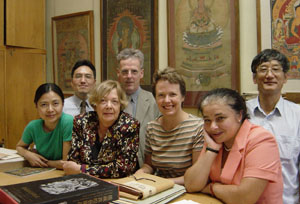
Right:Visit of IDP and the Chiang Ching-Kuo Foundation to the State Hermitage Museum, St. Petersburg
Imre Galambos visited Academia Sinica in Taiwan in June to discuss collaboration on digitisation of their collection of Dunhuang manuscripts and to see their photographer at work.
Susan Whitfield also visited Paul Keeler and staff at the Golden Web Project in Cambridge to discuss potential collaboration.
Staff Presentations
Project staff gave presentations and papers at various institutes and conferences including: Association for Asian Studies Annual Conference (Washington DC, April); Dallas Art Museum (April); Silk Road Foundation Symposium (Berkeley, April); 'Marco Polo and the Encounter of East and West' (Toronto, May); the meeting of the Ancient India and Iranian Trust (Cambridge, UK, June); 'International Symposium on the History of Dunhuang Studies' (Beijing University of Technology, August); 'Turfan Revisited: The First Century of Research into the Arts and Cultures of the Silk Road' (Berlin, September); and the Annual Meeting of the Pacific Neighbourhood Consortium, the Electronic Cultural Atlas Initiative and the Electronic Buddhist Text Initiative (Osaka, September).
Visitors
Francoise Praderie and Professor Bonnet-Bidaud, astronomers from Paris, visited the British Library in April to discuss working on the Star Chart from Dunhuang.
Greg Bearman of NASA met with Susan Whitfield and Jonathan Jackson to discuss IR photography.
Zsuzsanna Gukasci and Jason BeDuhn, both Manichean specialists, visited to look at some Stein fragments.
Professor Fang Guangchang from the Institute of Religions, Chinese Academy of Social Sciences, completed his two month stay at the British Library which was part of his work on the catalogue of Buddhist fragments from the Stein Second Expedition material, (Or.8210/S.6981 onwards), volume 1 of which has already been published. His visit was funded by the Sino-British Fellowship Trust.
Sun Liping from the National Library of China visited the International Dunhuang Project at the British Library in August.
Other visitors to IDP over the past four months have included Tim Yeo MP (UK opposition culture spokesman), a group of academics from Seattle, the Swiss National Librarian Jean Frederic Jauslin, Keith Knox, a specialist on IR imaging, and Michael Gray, curator of the Fox Talbot Museum.
Gandhari woodslips
Digitisation of the Gandhari woodslips in the Stein collection was completed and the remainder of the thousand images will be online very shortly. The images were prepared at the request of Professor Lin Meicun and will all be published in the forthcoming catalogue of woodslips from Loulan and Niya in Kharosthi script. Digitisation was funded by the Institute for Niya Studies, Bukkyo University.
